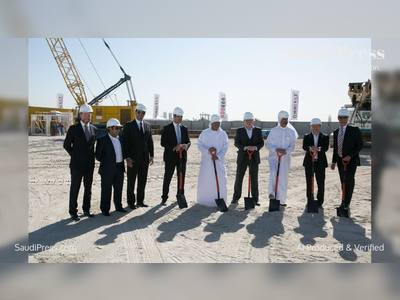
Saudi Arabia's Automotive Sector: Rapid Localization and Global Ambitions under Vision 2030
Saudi Arabia's automotive sector is making rapid progress towards localization as part of the government's Vision 2030 goals, according to Aftab Ahmed, a senior adviser to the Kingdom's National Center for Industrial Development.
The transition to domestic production of passenger vehicles and parts is in line with the National Industrial Strategy under Vision 2030.
Industry leaders from Saudi Arabia and the US discussed various aspects of the sector, including government initiatives, investment standards, and operational experiences, at a recent virtual seminar hosted by the Saudi-American Business Council and the NCID.
A event brought together industry leaders, including Ceer CEO James DeLuca and Lucid Motors Vice President for the Middle East Faisal Sultan, to discuss opportunities and share insights in the evolving automotive industry.
The Saudi-American Business Council, led by Interim President and CEO Susan Lindman, organized the event to foster collaboration and growth in the Kingdom's automotive sector, emphasizing their long-standing mission to connect industry leaders and promote valuable networking and discussions.
Lindman stated that such events are essential for driving innovation and progress within the industry and supporting initiatives that enhance mutual prosperity and development.
In November 2021, Khalil Ibn Salamah, CEO of the Saudi Arabian National Industrial Development (NCID), announced that Saudi Arabia aims to establish itself as a regional hub for the automotive industry.
This initiative aligns with Vision 2030 and the National Industrial Strategy launched in 2022.
The Kingdom is not only working on creating its own car brand but also developing a new industry that will attract domestic and international investment.
The National Industrial Strategy aims to transform the sector's economy into a flexible, regionally integrated powerhouse, with a focus on global leadership in selected commodities.
To achieve this goal, the strategy is strengthening supply chains, enhancing the legislative and financing landscape, increasing contributions from small and medium-sized enterprises, and boosting local content.
The text outlines a strategic plan to grow the industrial sector in a particular region, with a focus on expanding international trade and promoting innovation and talent retention.
The goals are ambitious, aiming to increase the industrial gross domestic product contribution to $377.06 billion by 2035, create 3.3 million jobs, and significantly boost exports and localization rates.
Industry leaders from Saudi Arabia and the US discussed various aspects of the sector, including government initiatives, investment standards, and operational experiences, at a recent virtual seminar hosted by the Saudi-American Business Council and the NCID.
A event brought together industry leaders, including Ceer CEO James DeLuca and Lucid Motors Vice President for the Middle East Faisal Sultan, to discuss opportunities and share insights in the evolving automotive industry.
The Saudi-American Business Council, led by Interim President and CEO Susan Lindman, organized the event to foster collaboration and growth in the Kingdom's automotive sector, emphasizing their long-standing mission to connect industry leaders and promote valuable networking and discussions.
Lindman stated that such events are essential for driving innovation and progress within the industry and supporting initiatives that enhance mutual prosperity and development.
In November 2021, Khalil Ibn Salamah, CEO of the Saudi Arabian National Industrial Development (NCID), announced that Saudi Arabia aims to establish itself as a regional hub for the automotive industry.
This initiative aligns with Vision 2030 and the National Industrial Strategy launched in 2022.
The Kingdom is not only working on creating its own car brand but also developing a new industry that will attract domestic and international investment.
The National Industrial Strategy aims to transform the sector's economy into a flexible, regionally integrated powerhouse, with a focus on global leadership in selected commodities.
To achieve this goal, the strategy is strengthening supply chains, enhancing the legislative and financing landscape, increasing contributions from small and medium-sized enterprises, and boosting local content.
The text outlines a strategic plan to grow the industrial sector in a particular region, with a focus on expanding international trade and promoting innovation and talent retention.
The goals are ambitious, aiming to increase the industrial gross domestic product contribution to $377.06 billion by 2035, create 3.3 million jobs, and significantly boost exports and localization rates.
Translation:
•
Translated by AI











